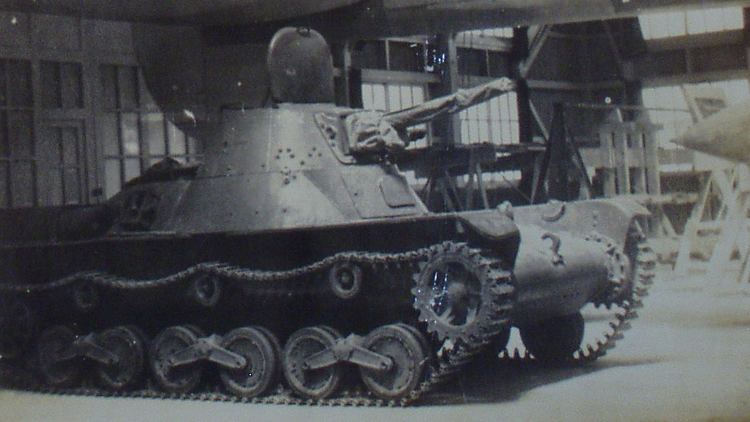Place of origin Empire of Japan Produced 1942–1943 Weight 7.2 tons (metric) | Designed 1938 No. built 104 Length 4.11 m (13 ft 6 in) | |
 | ||
The Type 98 light tank Ke-Ni (九八式軽戦車 ケニ, Kyuhachi-shiki keisensha Ke-Ni) or Type 98A Ke-Ni Ko (also known as Type 98 Chi-Ni light tank) was designed to replace the Imperial Japanese Army's Type 95 Ha-Go light tank, Japan's most numerous armored fighting vehicle during World War II. Although designed before World War II, production did not start until 1942, with 104 being produced by the end of the war.
Contents
History and development
The Type 98 developed in 1938 was a light tank with the same weight as the earlier Type 95, but with thicker armor. The prototype of the new Type 98 tank was completed by Hino Motors, but it did not enter production at the time. This can be attributed to the adequate performance of the aging Type 95 against obsolete tanks of National Revolutionary Army of the Republic of China forces.
With the start of World War II, the Imperial Japanese Army General Staff quickly realized that the Type 95 design was vulnerable to .50 caliber machine gun fire and attempted to develop a light tank with the same weight as the Type 95, but with thicker armor. A production contract for the Type 98 was awarded to Hino Motors. Serious production began in 1942. A total of 104 Type 98s are known to have been built: 1 in 1941, 24 in 1942 and 79 in 1943. By the end of the war, the Imperial Navy had priority on steel for warships and aircraft construction, leaving the Imperial Japanese Army at a low priority for raw material to build tanks.
Design
The design of the Type 98, in comparison to the Type 95, featured thicker, welded armor of improved shape, including the use of a Mitsubishi Type 100 6-Cylinder air-cooled diesel engine, rated at 130 horsepower, and located sideways to make maintenance easier. Slightly lighter and shorter than the original Type 95, it could travel at 50 km/h even with its thicker armor. Three pairs of bogies with six road-wheels connected to the chassis using bell cranks, which transferred any movement in the bogies into sideways motion that was absorbed by springs.
In contrast to the one-man turret of Type 95, the Type 98 had a two-man turret, which offered more room for the gunner/commander and carried a Type 100 37 mm tank gun, with a muzzle velocity of 760 m/s, and also a coaxial 7.7 mm machine gun.
